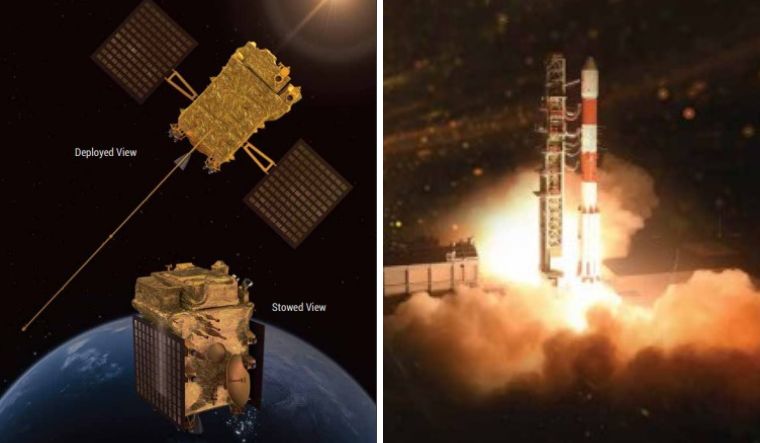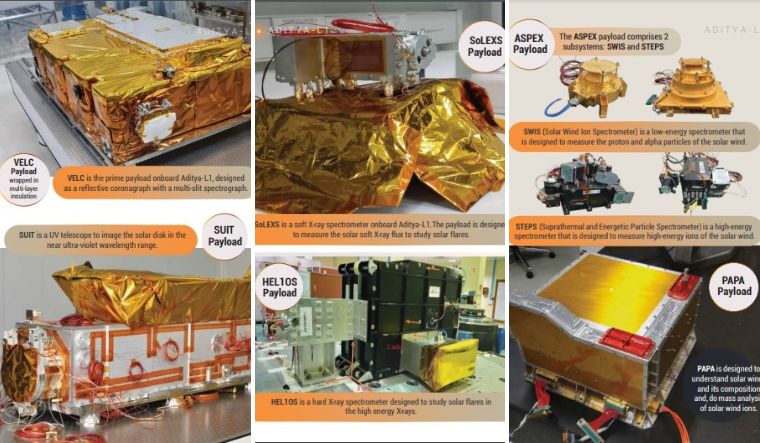Aditya-L1, which will be ISRO's first space-based mission to study the sun, will be placed in a halo orbit around the Lagrange point 1 (L1) of the sun-earth system. This L1 point is about 1.5 million km from our planet. A spacecraft placed in the halo orbit around the L1 point can continuously viewing the sun without any eclipses and help observe the solar activities and its effect on space weather in real time.
How to livestream Aditya L1 launch?
The launch of ISRO's Aditya-L1 can be livestreamed on ISRO's official website isro.gov.in as well as its official YouTube channel and Facebook page on September 2. DD National will also broadcast the historic event.
When will Aditya-L1 be launched?
Aditya-L1 will be launched from the Satish Dhawan Space Centre in Sriharikota at 11:50 am on September 2.
What will the seven payloads do?
The satellite carries seven payloads to observe the photosphere, chromosphere and the corona of the sun using electromagnetic and particle and magnetic field detectors.
Four of the seven payloads are remote sensing and can directly view the sun. The remaining three payloads carry out in-situ studies of particles and fields at L1, thus providing important scientific studies of the propagatory effect of solar dynamics in the interplanetary medium.
The suits of Aditya-L1 payloads are expected to provide crucial information to understand the problem of coronal heating, coronal mass ejection, pre-flare and flare activities and their characteristics, dynamics of space weather, propagation of particle and fields etc.
Which are the seven payloads?
Visible Emission Line Coronagraph (VELC): The VELC payload will study solar corona and dynamics of coronal mass ejections. The payload is developed by Indian Institute of Astrophysics, Bengaluru in close collaboration with ISRO. It is designed to image solar corona.
Solar Ultraviolet Imaging Telescope (SUIT): SUIT is a space telescope developed by Pune’s Inter-University Center for Astronomy and Astrophysics (IUCAA) and will image the solar photosphere and chromosphere in near Ultra-violet (UV) and, to measure the solar irradiance variations in near UV.
Aditya Solar Wind Particle Experiment (ASPEX): ASPEX will study the solar and interplanetary processes, including shock effects and wave-particle interactions, in the acceleration and energization of the solar wind particles. It is developed at Physical Research Laboratory, Ahmedabad.
Plasma Analyser Package for Aditya (PAPA): PAPA will study the composition of solar wind and its energy and velocity distribution. It is developed at Space Physics Laboratory, Vikram Sarabhai Space Centre, Thiruvananthapuram.
Solar Low Energy X-ray Spectrometer (SoLEXS): designed to study the X-ray flares from the sun over a wide X-ray energy range.
High Energy L1 Orbiting X-ray Spectrometer (HEL1OS): Like SoLEXS, HEL1OS is also designed to study the X-ray flares from the sun over a wide X-ray energy range. Both these payloads are developed at UR Rao Satellite Centre, Bengaluru.
Magnetometer: This payload is capable of measuring interplanetary magnetic fields at the L1 point. It is developed at Laboratory for Electro Optics Systems, Bengaluru.
What studies will Aditya-L1 conduct?
According to ISRO, Aditya-L1 will conduct the following studies:
Study of Solar upper atmospheric (chromosphere and corona) dynamics.
Study of chromospheric and coronal heating, physics of the partially ionized plasma, initiation of the coronal mass ejections, and flares
Observe the in-situ particle and plasma environment providing data for the study of particle dynamics from the Sun.
Physics of solar corona and its heating mechanism.
Diagnostics of the coronal and coronal loops plasma: Temperature, velocity and density.
Development, dynamics and origin of CMEs.
Identify the sequence of processes that occur at multiple layers (chromosphere, base and extended corona) which eventually leads to solar eruptive events.
Magnetic field topology and magnetic field measurements in the solar corona.
Drivers for space weather (origin, composition and dynamics of solar wind.




